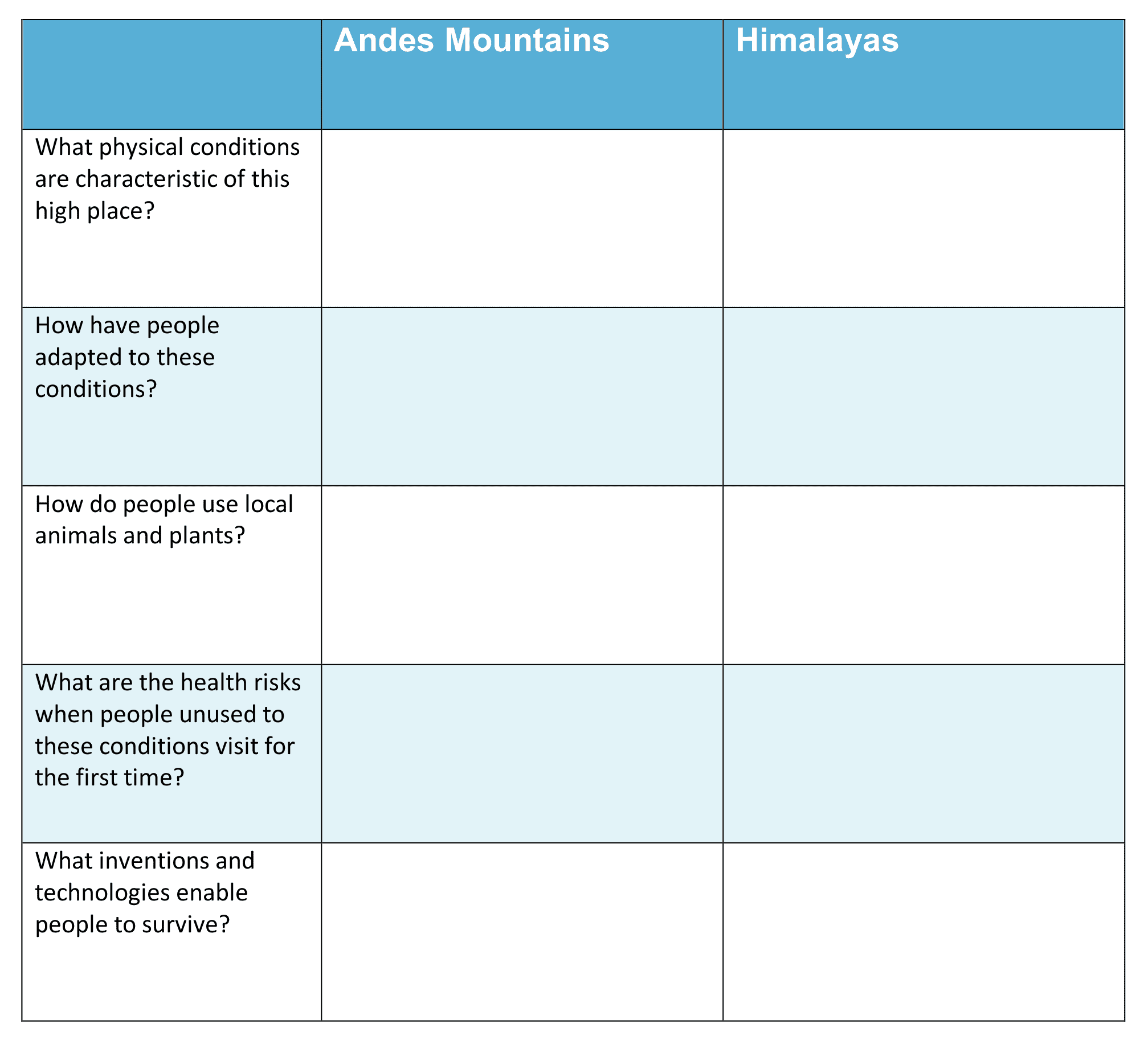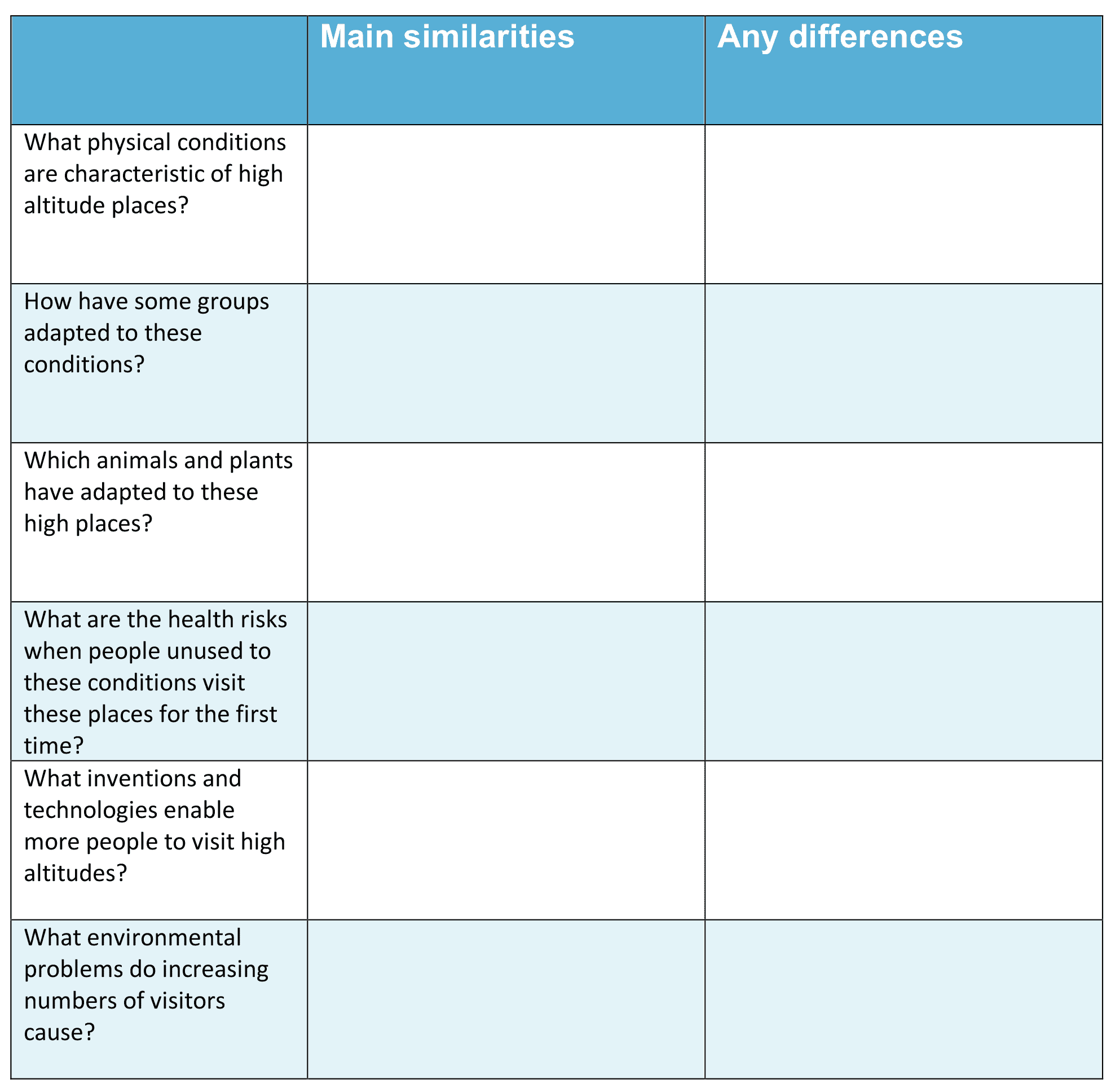Information for Teachers
Curriculum links
This investigation is linked to the following C3 Social Studies Standards for Grades 3–5.
D2.Geo.2.3-5. Use maps, satellite images, photographs, and other representations to explain relationships between the locations of places and regions and their environmental characteristics.
D2.Geo.6.3-5. Describe how environmental and cultural characteristics influence population distribution in specific places or regions.
D2.Geo.8.3-5. Explain how human settlements and movements relate to the locations and use of various natural resources.
D2.Geo.10.3-5. Explain why environmental characteristics vary among different world regions.
How to search the internet
1 Keep your request short
Fewer words will give a more accurate search.
2 Choose exactly what you want
For example: Arctic Circle Climate
3 Use quotes
Double quotes around a set of words tell the search engine to consider those exact words in that exact order without any change. For example: “Arctic Circle Climate”
4 Use the plus sign (+)
If you add a plus sign (+) between words, the internet will search for all the words. For example: migrate+birds+whales+mammal
5 Use the minus sign (–) to say what you don’t want
Use a minus sign (–) to show words you do not want to appear in your results. For example: if you search for burrowing animals and do not want mammals in your search, –mammals will exclude mammals. Note that you need to put a space before the minus sign for the word to be excluded.
6 Be very clear about what you don’t want
Part 1
Ask questions and define problems
After reading High Up, you may have many questions about how some people have adapted to living in high places.
List your questions
- Compare your list with questions that others have.
- Choose a question you would like to investigate.
- You can work alone, with a partner, or in a small group.
You may want to choose one or more of these questions to investigate
Q1. What physical conditions are characteristic of high altitude places?
Q2. How have some groups adapted to high altitude conditions?
Q3. How do people in these places use local animals and plants?
Q4. What are the health risks when people unused to these conditions visit these places for the first time?
Q5. What inventions and technologies enable people to survive in high altitudes?
Go to Part 2 Investigate →Part 2
Investigate
Helpful websites
You may want to use websites to help with your investigations.
You can search for:
- definitions and images of high mountainous places
- descriptions of Indigenous high-altitude groups of people
- descriptions of high-altitude plants and animals.
Part 3
Record data
Find a way of recording your information that will allow you to see any patterns in the data.
Data Chart for High Up
(Download and change to suit your information)
 Download Chart
Download Chart
Go to Part 4 Organize, analyze, and interpret data →
Part 4
Organize, analyze, and interpret data
1. Look over the information you have gathered and the patterns you have found.
What physical conditions are characteristic of high altitude places?
How have some people used animals and plants to survive in these places?
What other things now help these groups survive?
2. Search for other patterns.
What are the health risks when people unused to these conditions visit these places for the first time?
What inventions and technologies enable people to visit high altitudes?
What environmental problems do the increasing numbers of visitors to these high places cause?
3. Makes notes about what you find.
Go to Part 5 Present and share →
Part 5
Present and share
Look over all of the information that you have gathered in your investigation.
What are the most important ideas about the places and people in High Up?
Make a chart showing the most important ideas.
 Download Chart
Download Chart
← Return to menu